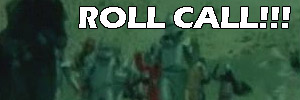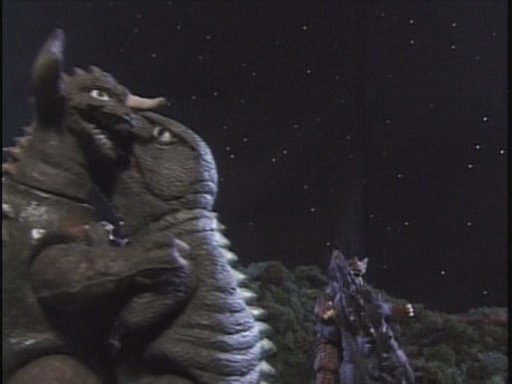High Degree Of Antibiotic Resistance Found In Wild Arctic Birds
ScienceDaily (Jan. 15, 2008) — Swedish researchers report that birds captured in the hyperboreal tundra, in connection with the tundra expedition “Beringia 2005,” were carriers of antibiotics-resistant bacteria. These findings indicate that resistance to antibiotics has spread into nature, which is an alarming prospect for future health care.
The scientists took samples from 97 birds in northeastern Siberia, northern Alaska, and northern Greenland. These samples were cultivated directly in special laboratories that the researchers had installed onboard the icebreaker Oden and were further analyzed at the microbiological laboratory at the Central Hospital in Växjö, Sweden.
“We were extremely surprised,” says Björn Olsen, professor of infectious diseases at Uppsala University and at the Laboratory for Zoonosis Research at the University of Kalmar.
“We took samples from birds living far out on the tundra and had no contact with people. This further confirms that resistance to antibiotics has become a global phenomenon and that virtually no region of the earth, with the possible exception of the Antarctic, is unaffected.”
The researchers’ hypothesis is that immigrating birds have passed through regions in Southeast Asia, for example, where there is a great deal of antibiotics pressure and carried with them the resistant bacteria to the tundra.
“We already knew that birds in the Western world can be carriers of bacteria that are resistant to antibiotics, but it’s alarming to find that these bacteria exist among birds out on the tundra,” says Jonas Bonnedahl, a physician infectious specializing in infectious diseases in Kalmar and one of those participating in the expedition.
“Our findings show that resistance to antibiotics is not limited to society and hospitals but is now spreading into the wild. Escalating resistance to antibiotics over the last few years has crystallized into one of the greatest threats to well-functioning health care in the future.”
This research is published in the journal Emerging Infectious Diseases.
Adapted from materials provided by Uppsala University, via EurekAlert!, a service of AAAS.
Godzilla Island – Story Arc 14
Godzilla Island – Story Arc 14

1997![]()

Directed by Shun Mizutani

The Godzilla Island convoy keeps on trucking, giving us another story arc filled with giant monsters, alien invaders, and random women showing up to save G-Guard Commander’s butt! Story Arc 14 introduces us to some new characters, and also introduces an element of ridiculousness to the show that’s just a tad bit crazy. But in a fun way. If you weren’t aware that this show was made for kids, then you will be fully informed by the events in this Story Arc. For those of you stumbling across this on internet searches, head over to Story Arc 1 to get a lowdown of what Godzilla Island is. For those of you following the story, read on!

We got a new cast! Who are these new chicks in the credits? Let’s find out!

|
Different monster feature in each episode, so we’ll keep track of them in each story arc. The complete Godzilla Island Daikaiju List is located here. We’ll also list any new monster match-ups that weren’t in any film but now exist thanks to this series, such as Manda fighting Megalon or something. The R2 Japanese DVD release is unsubtitled, so most of what is going on will be educated guesses thanks to our limited Japanese speaking ability. But here at TarsTarkas.NET we don’t need no stinking subtitles!

Podcast: Play in new window | Download
Avery’s Top 20 Craziest Kaiju Countdown
Avery G, who sends us movie news scoops, has just completed his Top 20 Craziest Kaiju Countdown hosted on the Undead Backbrain blog. Check out his choices and let him know what you think!
Godzilla Island – Story Arc 13
Godzilla Island – Story Arc 13

1997![]()

Directed by Shun Mizutani

This ultra-short story arc will be the shortest of the series. It will also be a clip show, despite the fact they’ve already had a clip show. If only they showed a clip show of the clip show, then we’d be getting somewhere (Hell!) We also get a slight remix of opening song, to emphasize the change in tone. Or something.


|
Different monster feature in each episode, so we’ll keep track of them in each story arc. The complete Godzilla Island Daikaiju List is located here. We’ll also list any new monster match-ups that weren’t in any film but now exist thanks to this series, such as Jet Jaguar fighting Proto-Moguera or something. The R2 Japanese DVD release is unsubtitled, so most of what is going on will be educated guesses thanks to our limited Japanese speaking ability. But here at TarsTarkas.NET we don’t need no stinking subtitles!

Tasmanian Tiger gene inserted into mouse, will NOT allow dinosaur cloning

Extinct Tasmanian tiger gene brought back to life: scientists
by Lawrence Bartlett Tue May 20, 3:14 AM ET
SYDNEY (AFP) – Scientists said Tuesday they had “resurrected” a gene from the extinct Tasmanian tiger by implanting it in a mouse, raising the future possibility of bringing animals such as dinosaurs back to life.
In what they describe as a world first, researchers from Australian and US universities extracted a gene from a preserved specimen of the doglike marsupial — formally known as a thylacine — and revived it in a mouse embryo.
“This is the first time that DNA from an extinct species has been used to induce a functional response in another living organism,” said research leader Andrew Pask of the University of Melbourne.
The announcement was hailed here as raising the possibility of recreating extinct animals.
Mike Archer, dean of science at the University of New South Wales who led an attempt to clone the thylacine when he was director of the Australian Museum, called it “one very significant step in that direction.”
“I’m personally convinced this is going to happen,” he told the Australian Broadcasting Corporation. “I’ve got another group working on another extinct Australian animal and we think this is highly probable.”
Pask told AFP in a telephone interview that while recreating extinct animals might be possible one day, it could not be done with the technique his team used on the Tasmanian tiger.
“We can look at the function of one gene within that animal. Most animals have about 30,000 genes,” he said.
“We hope that with advances in techniques that maybe one day that might be possible, but certainly as science stands at the moment, we are not able to do that, unfortunately.
“We’ve now created a technique people can use to look at the function of DNA from any extinct species, so you could use it from mammoth or Neanderthal man or even dinosaurs if there’s some intact DNA there.”
The last known Tasmanian tiger, which took its name from the Australian island and the stripes on its back, died in captivity in the Hobart Zoo in 1936, having been hunted to extinction in the wild in the early 1900s.
Some thylacine pups and adult tissues were preserved in alcohol, however, and the research team used specimens from the Museum Victoria in Melbourne.
“The research team isolated DNA from 100-year-old ethanol-fixed specimens,” the scientists said in a statement.
“After authenticating this DNA as truly thylacine, it was inserted into mouse embryos and its function examined.
“The thylacine DNA was resurrected, showing a function in the developing mouse cartilage, which will later form the bone.”
The results were due to be published in the international scientific journal PLoS ONE on Tuesday.
“This research has enormous potential for many applications including the development of new biomedicines and gaining a better understanding of the biology of extinct animals,” said co-researcher Richard Behringer of the University of Texas.
At a time when extinction rates are increasing the discovery is critical, said senior author Marilyn Renfree of the University of Melbourne.
“For those species that have already become extinct, our method shows that access to their genetic biodiversity may not be completely lost,” she said.
But Renfree also cautioned that the recreation of extinct animals was not the aim of the research.
“Maybe one day this might be possible but it won’t happen in my lifetime,” she told AFP. “It might happen in my children’s lifetime, but there’s so many steps we need to achieve before you could actually make this work.”
The prospect of bringing extinct animals back to life caught the public imagination after Steven Spielberg’s 1993 film “Jurassic Park,” based on the novel of the same name by Michael Crichton.
In that story, dinosaurs are cloned from genetic material found in mosquitoes that had sucked their blood before becoming preserved in amber. The dinosaurs then wreak havoc.
Ancient Parrot found, Monty Python references forced upon the world

Parrot Fossil 55 Million Years Old Discovered In Scandinavia
ScienceDaily (May 17, 2008) — Palaeontologists have discovered fossil remains in Scandinavia of parrots dating back 55 million years. Reported May 14 in the journal Palaeontology, the fossils indicate that parrots once flew wild over what is now Norway and Denmark.
Parrots today live only in the tropics and southern hemisphere, but this new research suggests that they first evolved in the North, much earlier than had been thought.
The fossil parrot was discovered on the Isle of Mors in the northwest of Denmark – far from where you’d normally expect to find a parrot. It’s a new species, officially named ‘Mopsitta tanta’. However, already its nick-name is the ‘Danish Blue Parrot’, a term derived from a famous comedy sketch about a ‘Norwegian Blue Parrot’ in the 1970s BBC television programme ‘Monty Python’.
The article goes on to explain the Monty Python Show for a long time. Seriously, a LOOOOOONG time. Science writers suck.




